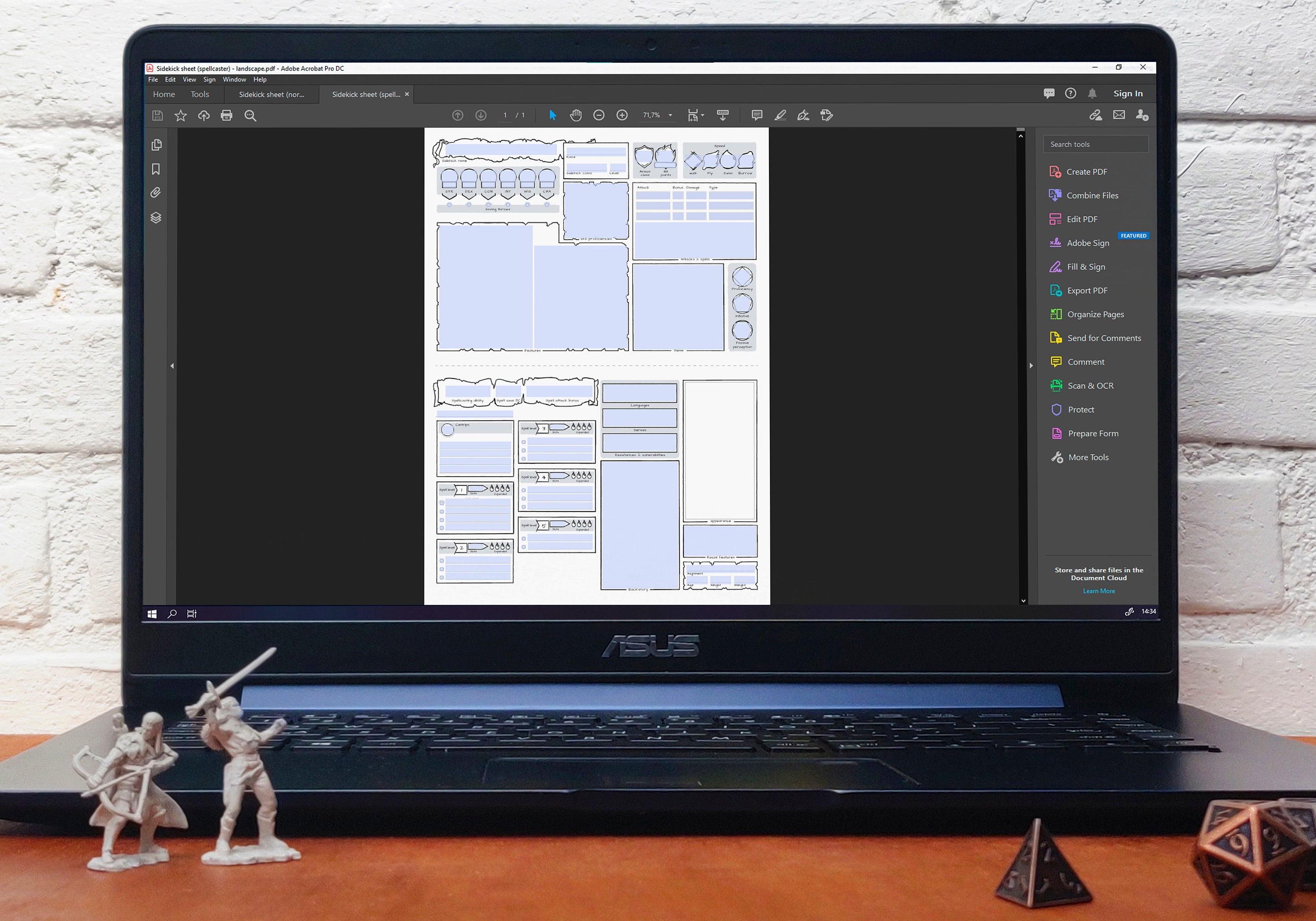

For example, if a 1st level group starts with a sidekick, that sidekick is also 1st level. The starting level of a sidekick is the same as the average level of the group. If a sidekick class contains a choice, you may make the choice or let the players make it. When you create a sidekick, you choose the class it will have for the rest of its career: Expert, Spell-Caster, or Warrior, each of which is detailed below. And when estimating the difficulty of an upcoming encounter, count each sidekick as a character. There's no limit on the number of sidekicks in a group, but having more than one player character can noticeably slow down the game.

For example, a sidekick could be a childhood friend or pet, or might be a creature the adventurers saved. This friendship might be connected to a character's backstory or to events that have transpired in play. To join the adventurers, the Sidekick must be the friend of at least one of them. You take the stat block and add to it, as explained in the "Gaining a Sidekick Class" section.
DND 5E SIDEKICK CHARACTER SHEET PDF MANUAL
Creating a SidekickĪ sidekick can be any kind of creature with a stat block in the Monster Manual or another D&D book, but the challenge rating must be 1/2 or lower. You can also use these rules to customize a monster as a DM.

For example, the party might meet a villager, an animal, or another creature, forge a friendship and invite the creature to join them on their adventures. These rules take a creature with a low challenge rating and give it levels in one of three simple classes: Expert, Spellcaster or Warrior.Ī sidekick can be incorporated into a group at the party's inception, or a sidekick might join them during the campaign. These influence the abilities of your character.This section provides a simple way to add a special NPC - called a sidekick - to the group of an adventurers. ABILITY SCORES: There six basic ability scores Strength, Dexterity, Constitution, Intelligence, Wisdom, and Charism.PROFICIENCIES: Proficiencies are skills that your character is talented in, which gives you bonus points to add to dice rolls associated with that skill.EQUIPMENT: Simply put, this is the equipment your character is currently in possession of.CHARACTER BELIEFS: Religious character? Athiest? In a world of fantasy creatures, there is a wide variety of beliefs to choose for your character.HIT POINTS: Hit points are a score indicating the current life your character has left.FEATURES AND TRAITS: These are highly-specific skills that have abilities that are useful to D&D gameplay.SKILLS: Just like real life, these are your character’s skills.New to Dungeons and Dragons, but don’t know what goes into a character sheet? Here’s a glossary of terms you’ll find on our fillable character sheets. Don’t want to roll that many dice? Instead, you can take the pre-determined scores of 15, 14, 13, 12, 10, 8 of the “Standard Set” and choose which stats you want to allocate each score to.Ī proficiency bonus is extra points a player may add to a dice roll associated with an activity their character is ‘proficient’, or talented, in.īasic Aspects Of the D&D 5e Character Sheet.You take the three highest dice ‘scores’ out of the four dice, and add them together for the stat of your choice. With a 6-sided die then you roll 4 times per stat.What Class Can My Character Be In Dungeons And Dragons?
DND 5E SIDEKICK CHARACTER SHEET PDF GENERATOR
If you want to know more about said languages, we have a whole D&D languages page dedicated to them.Ĭharacter Generator: This D&D 5e Random Character Generator will help you make an entirely random character for you to play with in your next game! Frequently Asked Questions Of D&D 5e Character Sheet

Languages: There are many languages across the Forgotten Realms that help create a diverse and unique world for players to interact with.


 0 kommentar(er)
0 kommentar(er)
